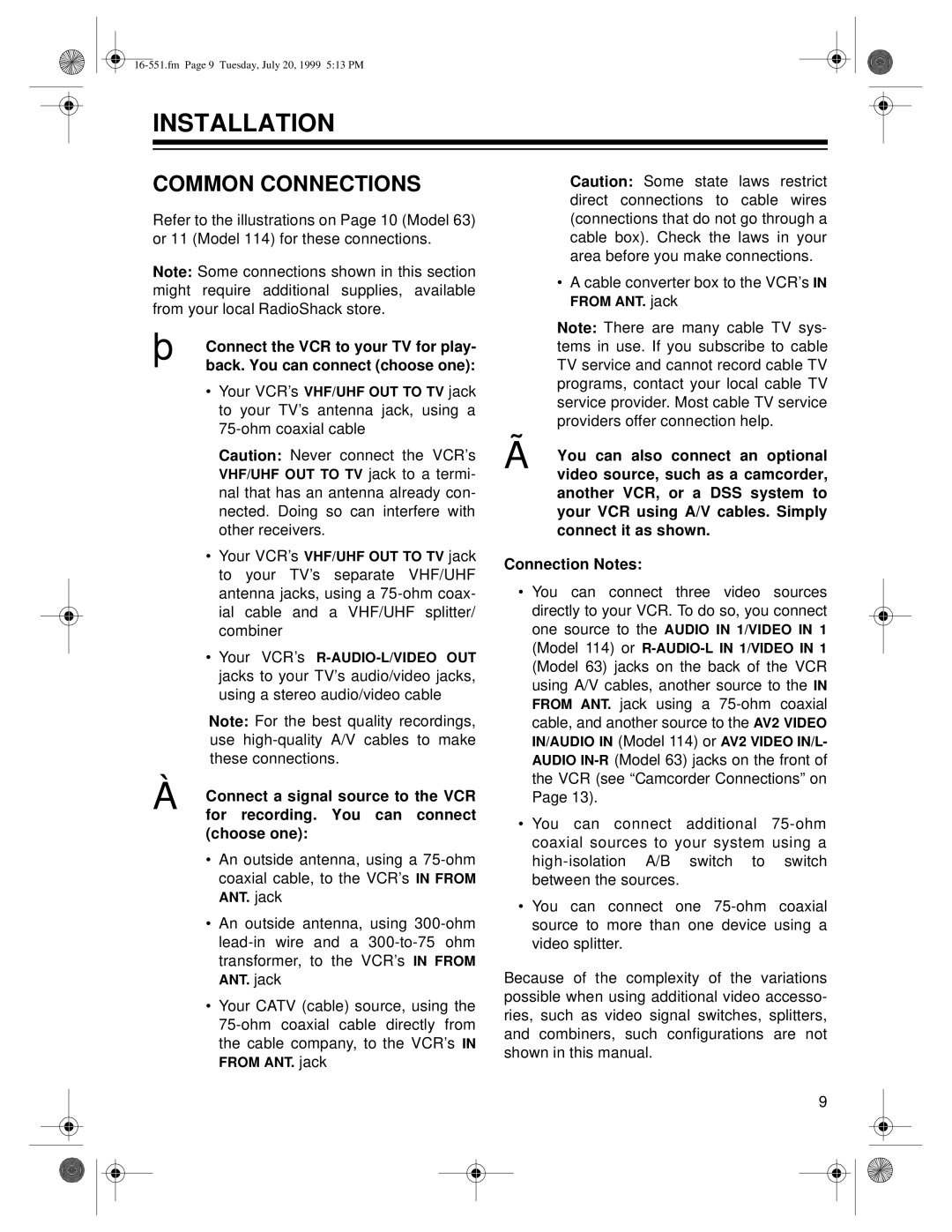
INSTALLATION
COMMON CONNECTIONS
Refer to the illustrations on Page 10 (Model 63) or 11 (Model 114) for these connections.
Note: Some connections shown in this section might require additional supplies, available from your local RadioShack store.
þConnect the VCR to your TV for play- back. You can connect (choose one):
•Your VCR’s VHF/UHF OUT TO TV jack to your TV’s antenna jack, using a
Caution: Some state laws restrict direct connections to cable wires (connections that do not go through a cable box). Check the laws in your area before you make connections.
•A cable converter box to the VCR’s IN FROM ANT. jack
Note: There are many cable TV sys- tems in use. If you subscribe to cable TV service and cannot record cable TV programs, contact your local cable TV service provider. Most cable TV service providers offer connection help.
Caution: Never connect the VCR’s VHF/UHF OUT TO TV jack to a termi- nal that has an antenna already con- nected. Doing so can interfere with other receivers.
•Your VCR’s VHF/UHF OUT TO TV jack to your TV’s separate VHF/UHF antenna jacks, using a
•Your VCR’s
Note: For the best quality recordings, use
ÀConnect a signal source to the VCR for recording. You can connect (choose one):
•An outside antenna, using a
•An outside antenna, using
•Your CATV (cable) source, using the
ÃYou can also connect an optional video source, such as a camcorder, another VCR, or a DSS system to your VCR using A/V cables. Simply connect it as shown.
Connection Notes:
•You can connect three video sources directly to your VCR. To do so, you connect one source to the AUDIO IN 1/VIDEO IN 1 (Model 114) or
(Model 63) jacks on the back of the VCR using A/V cables, another source to the IN FROM ANT. jack using a
•You can connect additional
•You can connect one
Because of the complexity of the variations possible when using additional video accesso- ries, such as video signal switches, splitters, and combiners, such configurations are not shown in this manual.
9
